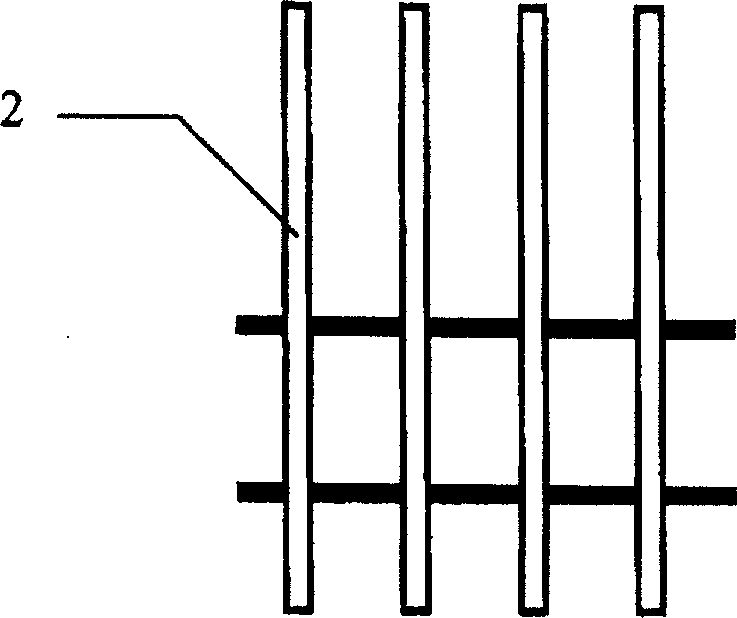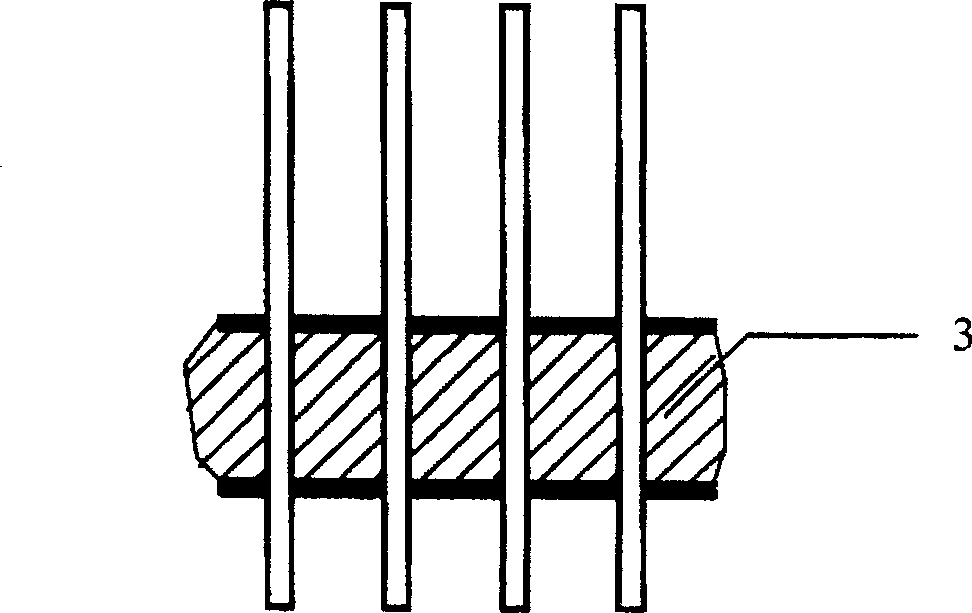Multiple electrode array and manufacturing method
A technology of multi-electrode array and manufacturing method, which is applied in the field of multi-electrode array, can solve the problems of non-productization, large brain tissue damage, and difficulty in manufacturing density, and achieve easy implementation, high reliability and mechanical strength, and eliminate the need for soldering. The effect of line craft
- Summary
- Abstract
- Description
- Claims
- Application Information
AI Technical Summary
Problems solved by technology
Method used
Image
Examples
Embodiment
[0045] see Figure 1 (a) ~ Figure 1 (f) , Take two pieces of brass with a thickness of 0.05 mm, laser drill a 10×10 array of micro-holes with a diameter of 30 μm and a hole spacing of 200 μm. The two micro-hole array thin plates 1 are horizontally separated by 1 mm and fixed. Take the steel wire 2 with a diameter of about 27 microns, straighten it and cut it into 100 steel wires 2 of 30 mm length, and insert the steel wire 2 into the micro holes of the two micro-hole array plates 1 with the tip of about 1 mm exposed. , The rear end is exposed to an appropriate length. Put the newly prepared denture tray resin 3 into the space between the two microporous array sheets 1 immediately. After 20 minutes, the resin 3 will solidify, pull out the steel wire 2. Peel off the two microporous array sheets 1, and trim the shape of the denture block A micro-hole array 4 with a hole diameter of about 25 microns, a hole depth of 1 mm, and a 10×10 can be obtained.
[0046] Prepare one hundred single...
PUM
 Login to View More
Login to View More Abstract
Description
Claims
Application Information
 Login to View More
Login to View More - R&D Engineer
- R&D Manager
- IP Professional
- Industry Leading Data Capabilities
- Powerful AI technology
- Patent DNA Extraction
Browse by: Latest US Patents, China's latest patents, Technical Efficacy Thesaurus, Application Domain, Technology Topic, Popular Technical Reports.
© 2024 PatSnap. All rights reserved.Legal|Privacy policy|Modern Slavery Act Transparency Statement|Sitemap|About US| Contact US: help@patsnap.com










